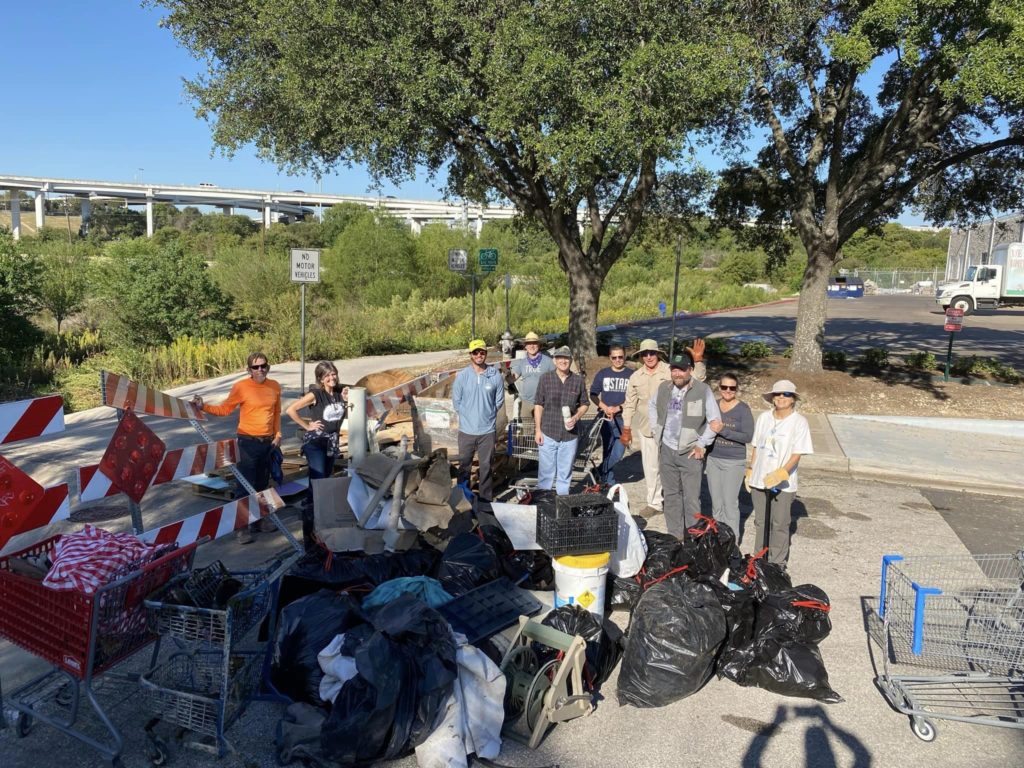Collecting Trash (Data) from Austin Creeks
October 25, 2022 | By Shoal Creek Conservancy
The City of Austin Watershed Protection Department (WPD) conducted an extensive field study to identify the sources and types of litter in Austin’s creeks, as instructed in a 2020 City Council Resolution directing the city to “prepare a study with recommendations to improve the ecological health and safety of Austin’s rivers, lakes, and creeks by addressing litter problems, prevention, and abatement in our watersheds.” This study is outstanding work by WPD and we highly recommend reading the full report or summary slides.
Trash in Creeks Study – Website
From November 2021 to April 2022, WPD staff collected data on trash in 20 Austin creeks, making observations every 30 feet along 110 miles of waterways, for a total of 19,467 data points.
Interesting takeaways across all citywide creeks:
76% of the trash was found in just 10% of the observed area. View the georeferenced map for information about the trash intensity and source locations.
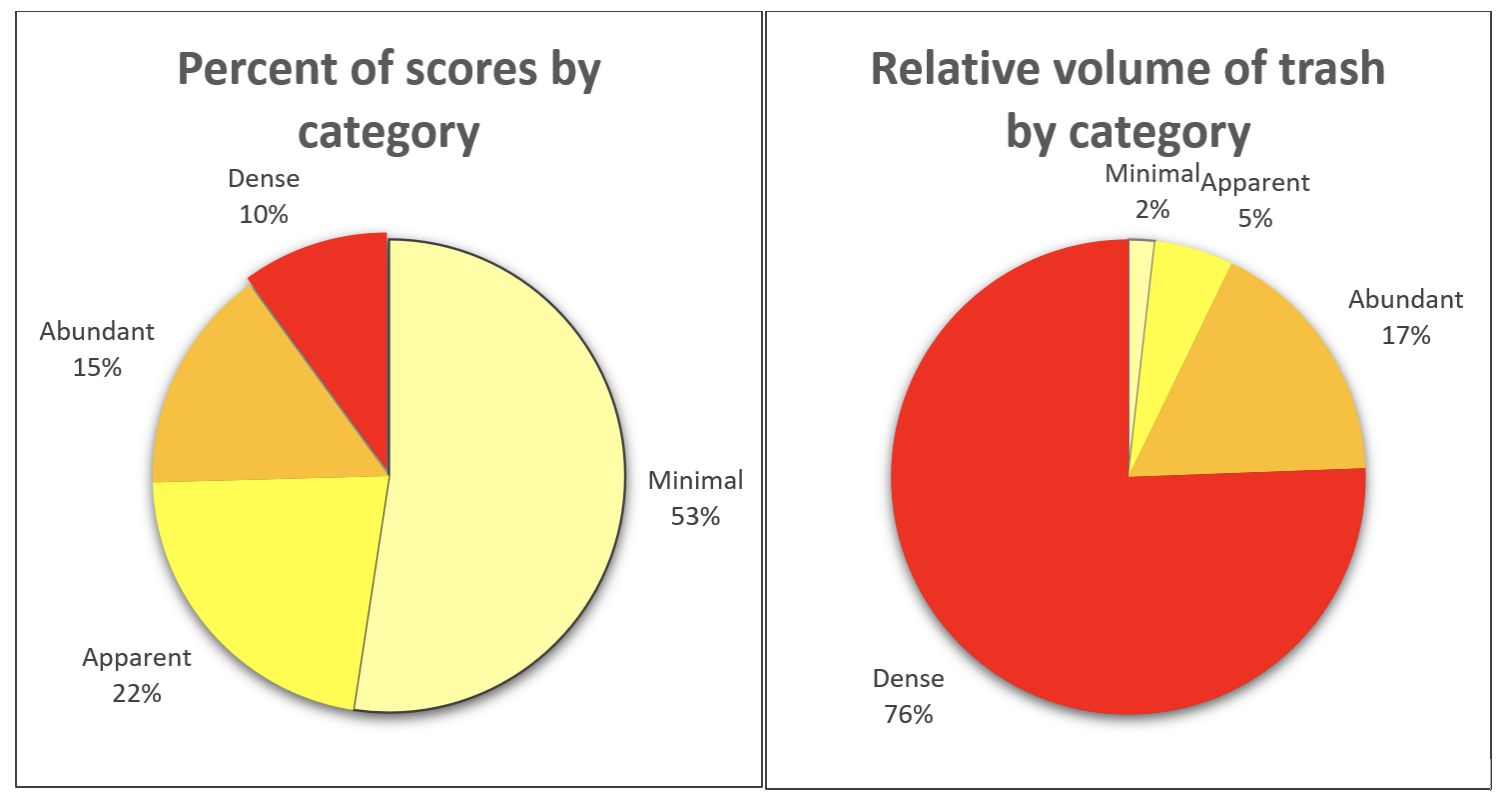
Trash can be found anywhere in a creek, not necessarily more downstream. Trash tends to collect in areas with dense vegetation but it’s “mobility is generally dependent on 1) the item (buoyancy, shape, size, weight, etc.), 2) the water (velocity, depth, frequency of storms), and 3) the roughness, or complexity of the stream and riparian corridor,” so trash type, stormwater intensity, and stream character have a big impact on its observed location.
Encampment was the most commonly observed source. However, all sources except Outfall or Tributary, had similarly high median values (middle horizontal line in the chart below) and ranges (length of rectangle), suggesting that nearly all sources contribute comparably to the total trash observed. “This data summary implies that Dumping Unknown is a focal point characterized by the highest intensity of trash compared to the other sources.”
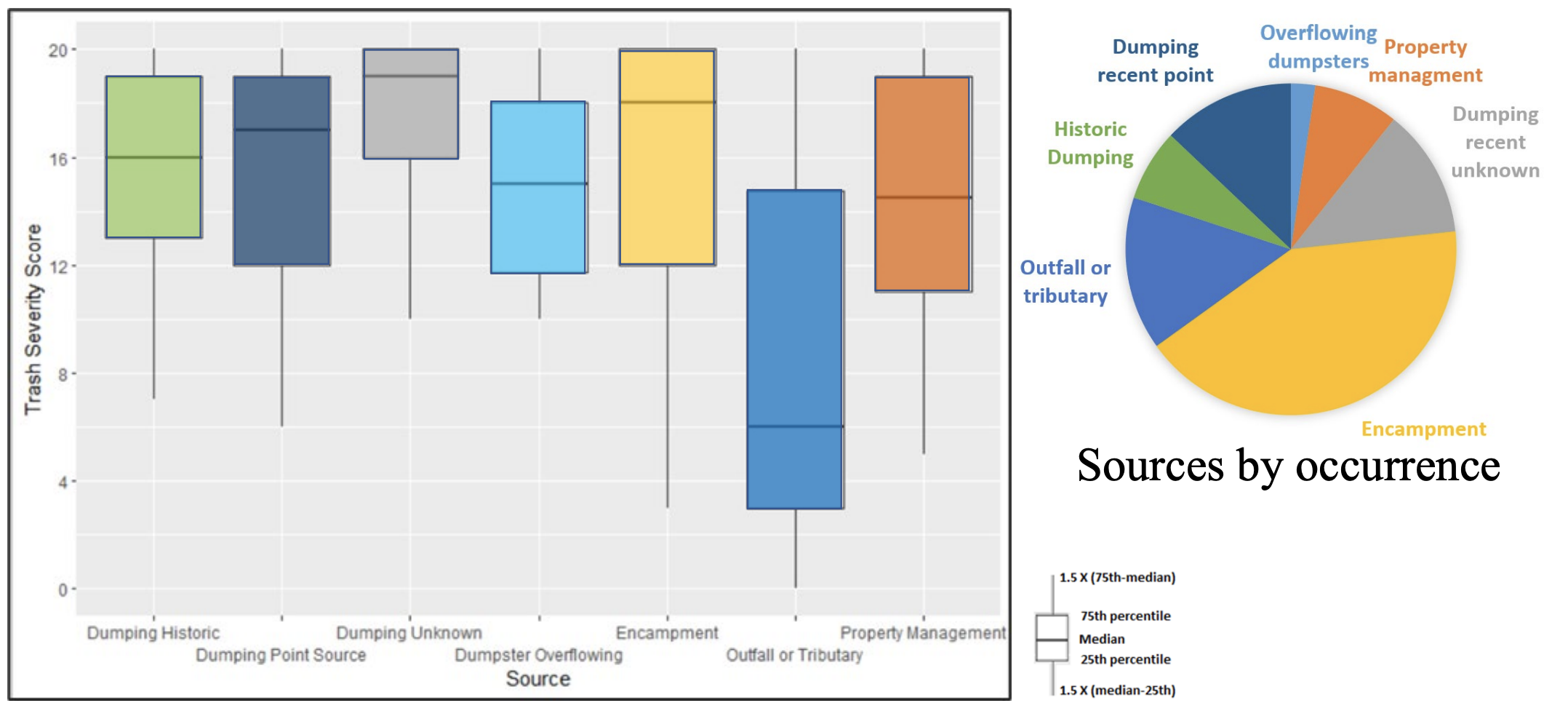
21 scooters were found, compared to over 500 shopping carts. Efforts like reducing the number of scooter fleets, improving the method for reporting via the 3-1-1 app, and a more efficient vendor process for retrieving micro-mobility devices are possible reasons for the small occurrence. While scooters are likely worse for creeks because of their batteries, their numbers make them a less significant litter source, particularly when compared to observing over 500 shopping carts in just these 110 miles of waterways.
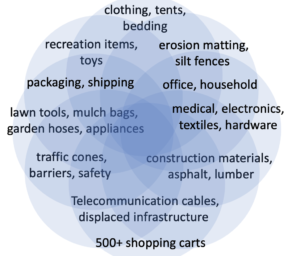
Single-use plastic was the most common item found. Not surprising, unfortunately.
There were no statistically significant correlations between trash intensity and landuse, impervious cover, parks, census, transportation, etc. Disappointing because correlations with a particular use or feature could allow for those areas to be strategically targeted for improvement.
Interesting observations in Shoal Creek:
The most common source of trash was Property Management. These include improperly disposed of items from apartments and commercial lots. This trash source has a high concentration along upper Shoal Creek.
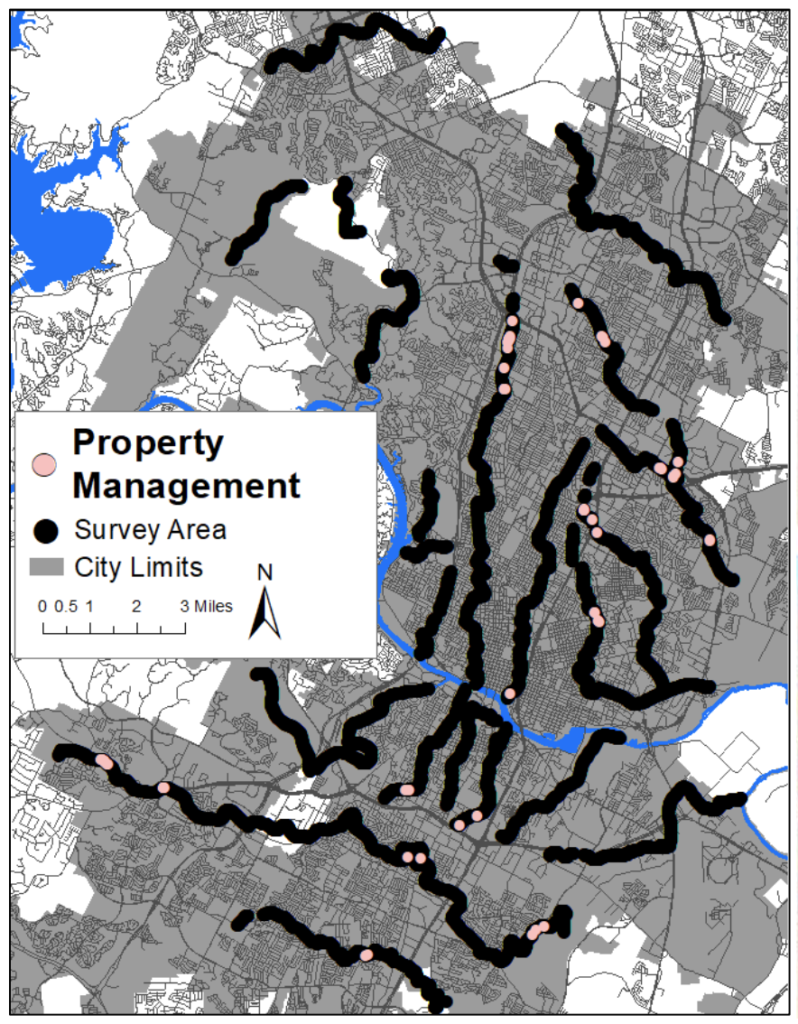
The second most common source of trash was Overflowing Dumpster. This may be a more “easily preventable problem compared to other sources because they indicate either an undersized capacity or deficient frequency of emptying rather than human disregard for misplaced trash.” This trash source has a high concentration along upper Shoal Creek.
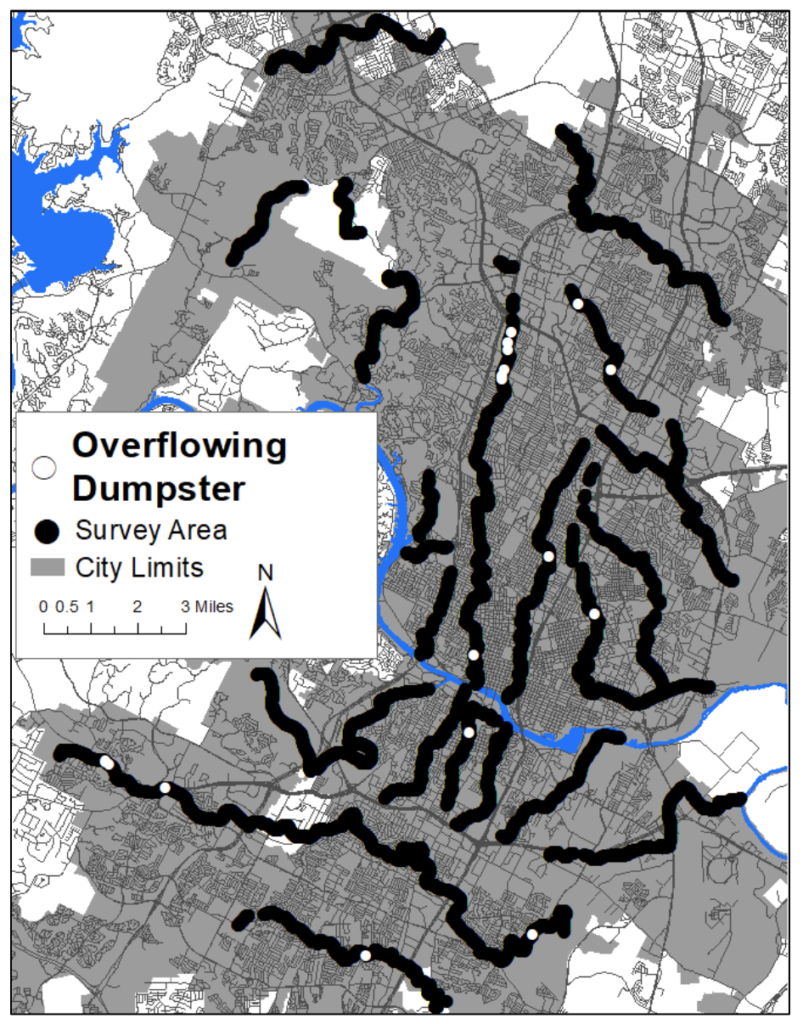
Less trash was observed in lower Shoal Creek, from just south of 45th Street to around 2nd Street. The reason is the nature of the creek in that region, which is wider and flatter, allowing fast flowing water to carry trash and debris to Lady Bird Lake. This is actually less desirable since removing trash from the lake is more challenging than removing trash from the creeks. Areas with dense woody vegetation are “natural trash detention “strainers” that keep much trash from entering our lake/river and are opportunities for focal areas of trash removal.”
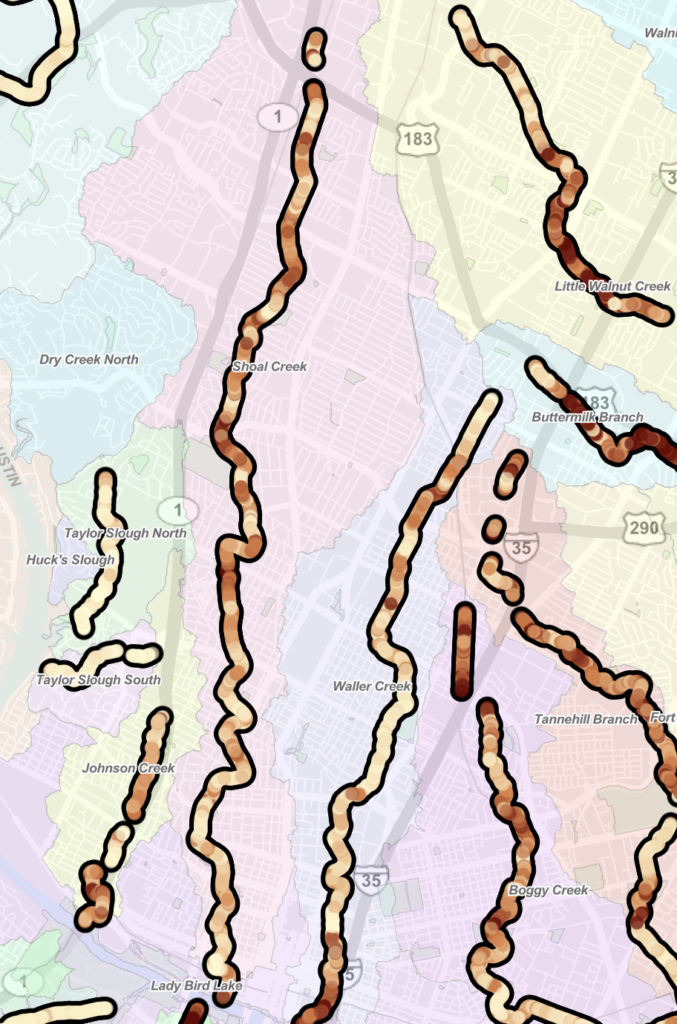
Solution tactics outlined in the report:
WPD, with input from other city departments and community partners, are currently compiling a list of recommended solutions to present to city council for potential implementation. There is much to consider, including factors like funding, feasibility, maintenance, and enforcement, but the goal is to actively pursue solutions based on the information gathered in the field study, which identified three main tactics to reduce trash in Austin’s creeks:
Extraction – physically removing trash from waterways
- Creek and lake cleanups, especially at targeted “hot spots”
- Vendor/individual cleanup enforcement
- Novel devices like booms and trash traps to concentrate trash and/or ease retrieval
Interception – keeping trash from entering waterways
- Improve capacity, proximity, and accessibility of trash collection solutions
- Facilitated reporting and violation enforcement
- Reduce incidence and effect of overflowing dumpsters
- Shopping cart on-site retention
- Evaluate street sweeping and storm drainage system controls
Source Reduction – stemming the flow into our community
- Education and outreach
- Voluntary partnerships/cooperation with businesses
- Water stations to reduce dependance on single-use plastic bottles
- Campaigns or strategies to reduce or restrict single-use plastics and Styrofoam
How Shoal Creek Conservancy is helping:
- Frequent volunteer workdays along Shoal Creek, with support from city departments and organizations like The Other Ones Foundation to target “hot spots” for cleanups.
- Implementing the Shoal Creek Watershed Action Plan and Shoal Creek Trail Plan which outline improvements like installing additional trash receptacles and pet waste stations along the trail.
- Partnering with the city, community, and other organizations to understand the sources of trash, impact on our waterways, and potential remediation solutions. WPD’s field study goes a long way in quantifying the trash problem in our creeks so that we can all work together to reduce it.
